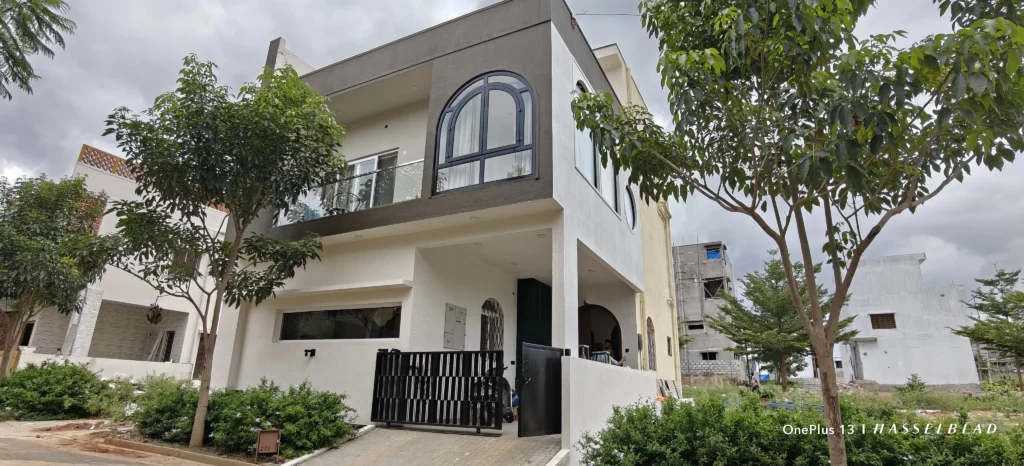
🏡 What Is Residential Building Construction?
Residential building construction refers to the process of designing and constructing housing structures where people live. These buildings can include independent homes, villas, duplexes, bungalows, apartments, and gated communities. The primary purpose of residential construction is to provide safe, comfortable, and functional living spaces.
Unlike commercial or industrial buildings, residential homes focus on aesthetics, personal comfort, and family needs. Whether you’re building a cozy farmhouse or a modern luxury villa, the construction journey starts with proper planning and the right execution.
📐 Key Phases of Residential Building Construction
A successful residential building construction project moves through multiple well-defined stages. Each stage plays a critical role in ensuring the safety, functionality, and longevity of your home.
1. Planning & Design
This is the foundation of your entire construction journey. Collaborate with an architect and civil engineer to:
- Create floor plans and elevations
- Ensure vastu compliance (if needed)
- Optimize space utilization
- Get necessary approvals and permits
2. Site Preparation & Foundation Work
Once the design is finalized, the construction site is cleared and leveled. Excavation work begins to lay the foundation. Depending on the soil type and building structure, different foundation types (like raft or isolated footing) may be used. A strong foundation ensures the structural integrity of your home.
3. Structural Framing
This stage involves constructing the building’s core framework using reinforced concrete and steel. It includes:
- Columns, beams, and slabs
- Roofing systems
- Staircase construction
Ensuring accurate load distribution is essential at this stage of residential building construction.
4. Masonry, Electrical, and Plumbing
Walls are built and partitioned based on your floor plan. Electrical wiring and plumbing systems are embedded within the walls and floors. This phase must be executed with precision to avoid leaks, short circuits, or future maintenance issues.
5. Plastering, Flooring, and Tiling
Plastering smooths the walls, and flooring materials (tiles, wood, marble) are installed. These elements enhance the look and durability of the interiors.
6. Fittings and Fixtures
This includes the installation of:
- Doors and windows
- Bathroom and kitchen fittings
- Electrical switches and lights
- Modular wardrobes and cabinets
7. Painting and Final Finishing
The final step of the residential building construction process involves wall painting, ceiling finishing, polish work, and cleaning. A well-finished home reflects quality and care in every detail.
🛠️ Why Choosing the Right Construction Partner Matters
Your home is a once-in-a-lifetime investment. Choosing a reliable construction company for your residential building construction ensures peace of mind and top-notch quality. Here’s why it matters:
- ✅ Experience & Knowledge: Skilled professionals avoid structural errors and delays.
- ✅ End-to-End Support: From blueprint to handover, a full-service construction firm simplifies your journey.
- ✅ Cost Transparency: Reputed builders give accurate estimates without hidden costs.
- ✅ Material Quality: High-quality cement, bricks, steel, and plumbing ensure longevity.
- ✅ Timely Delivery: Projects are completed on schedule, saving time and money.
💡 Tips for Successful Residential Construction
Whether you’re building a compact 2BHK or a lavish villa, here are some practical tips to keep your residential construction project on track:
- Define Your Requirements
List your needs — number of rooms, floors, balconies, parking, etc. - Budget Smartly
Plan for all stages: design, materials, labor, approvals, and interior work. Always keep a buffer of 10–15%. - Hire Licensed Professionals
Architects, engineers, and project managers ensure compliance and quality at every stage. - Stay Actively Involved
Regular site visits and open communication with your construction team help avoid surprises. - Plan for Sustainability
Use energy-efficient lighting, solar panels, rainwater harvesting systems, and natural ventilation. - Get Legal Approvals in Advance
Municipal permissions, electricity/water connection, and other NOCs should be taken care of early.
🏠 Why Residential Building Construction Is More Than Just Bricks
A home is more than just a structure — it’s your personal space, your comfort zone, and your legacy. Investing in a well-planned and well-executed residential building construction project means you’re creating a long-term asset for your family.
With the right team, smart planning, and quality craftsmanship, your dream home becomes a reality — one that’s beautiful, functional, and built to last.
📞 Ready to Start Your Dream Home?
At [Your Company Name], we specialize in residential building construction — offering end-to-end services from concept to completion. Whether you’re looking to build a villa, duplex, or farmhouse, our experienced team ensures unmatched quality and timely delivery.
✅ Free consultation
✅ Transparent pricing
✅ Custom design options
✅ On-time handover
Contact us today to get started on your dream home!

Hi, this is a comment.
To get started with moderating, editing, and deleting comments, please visit the Comments screen in the dashboard.
Commenter avatars come from Gravatar.